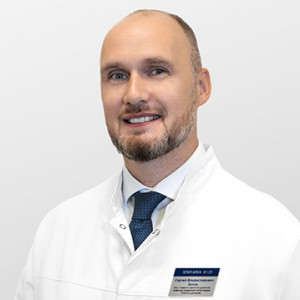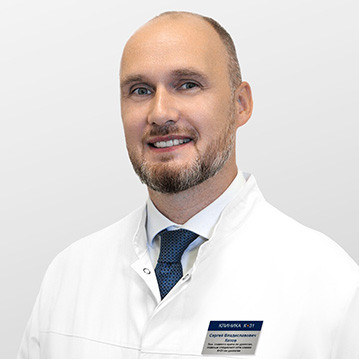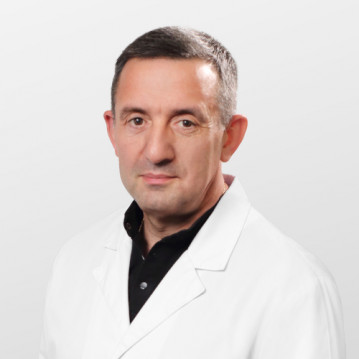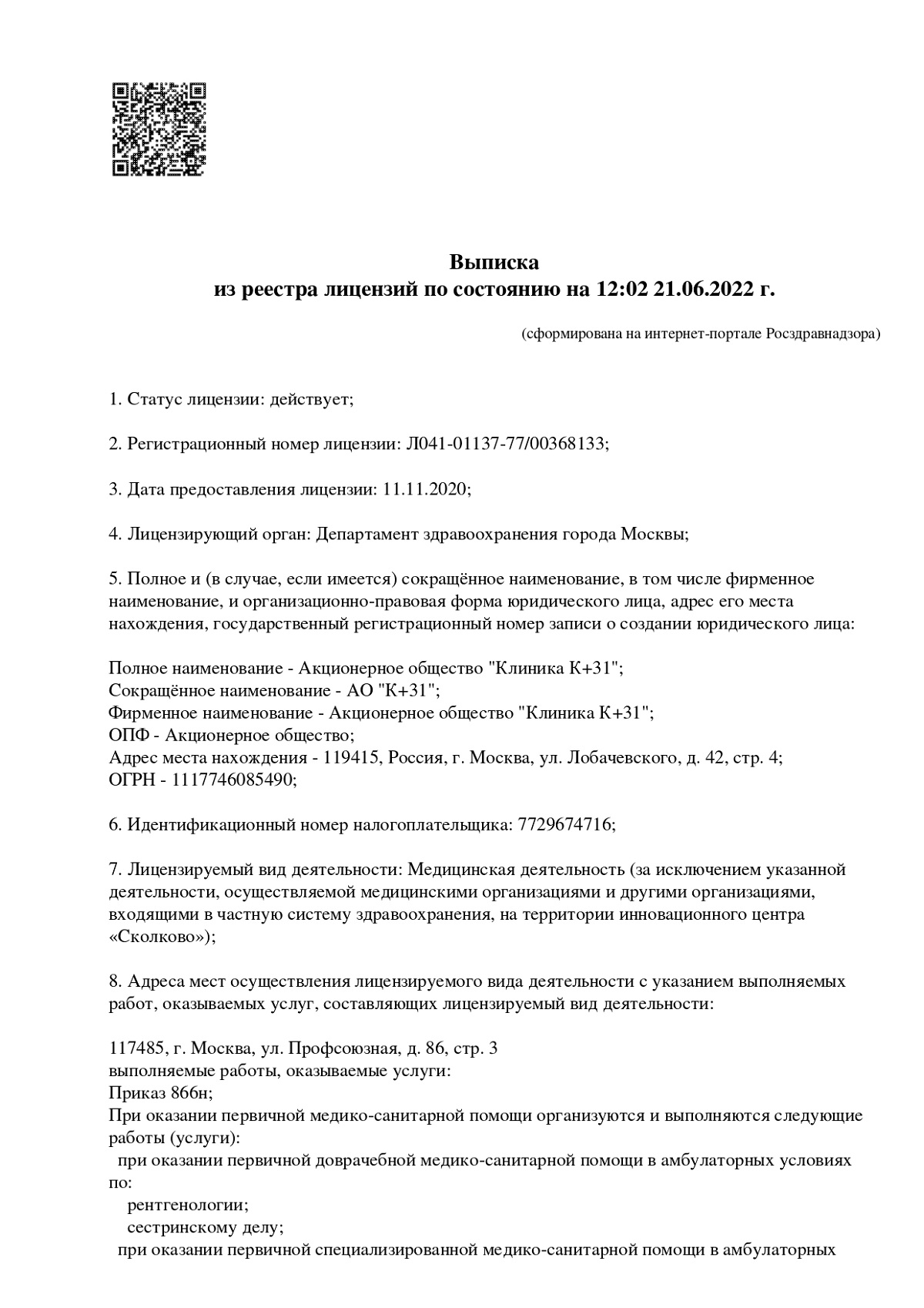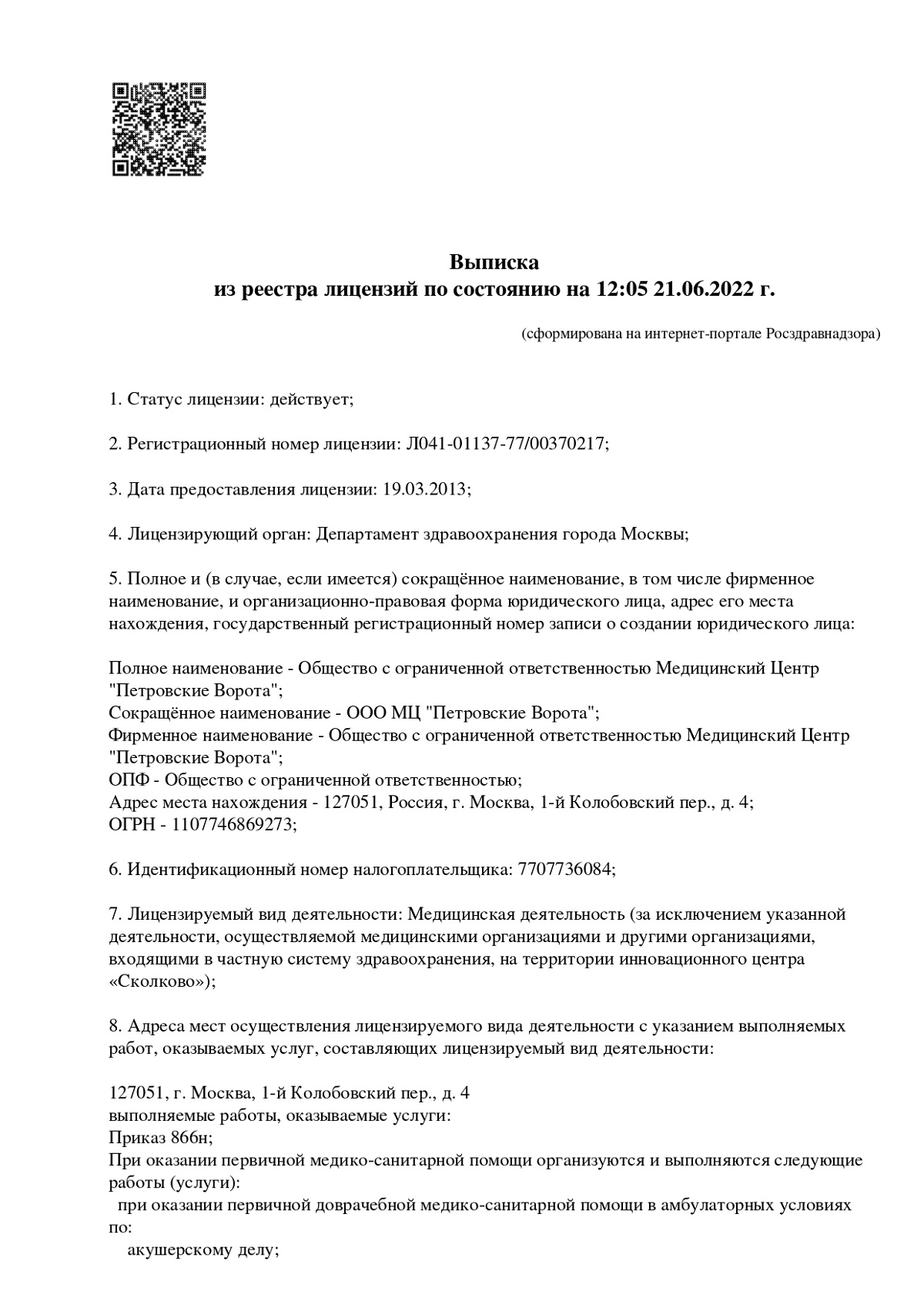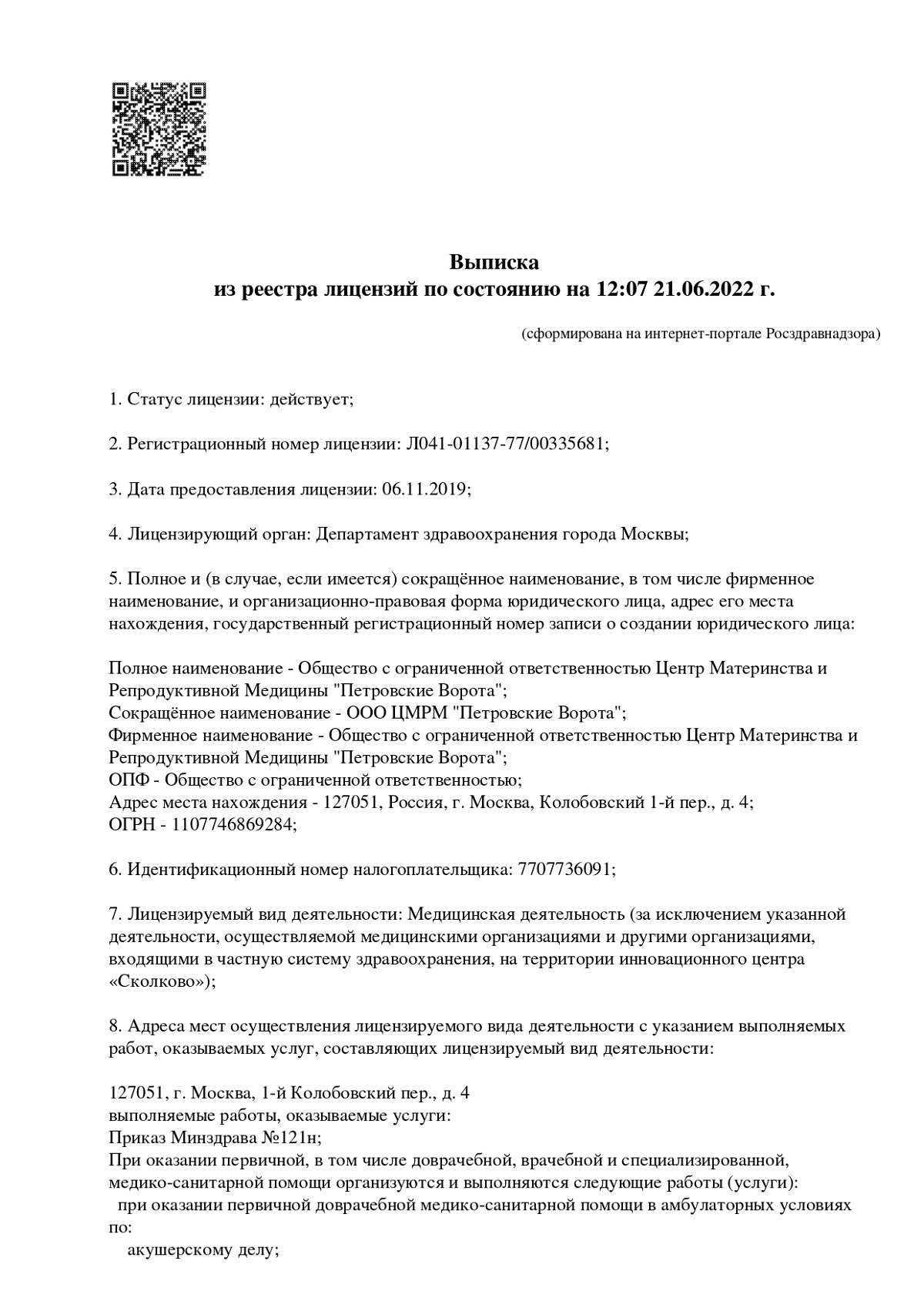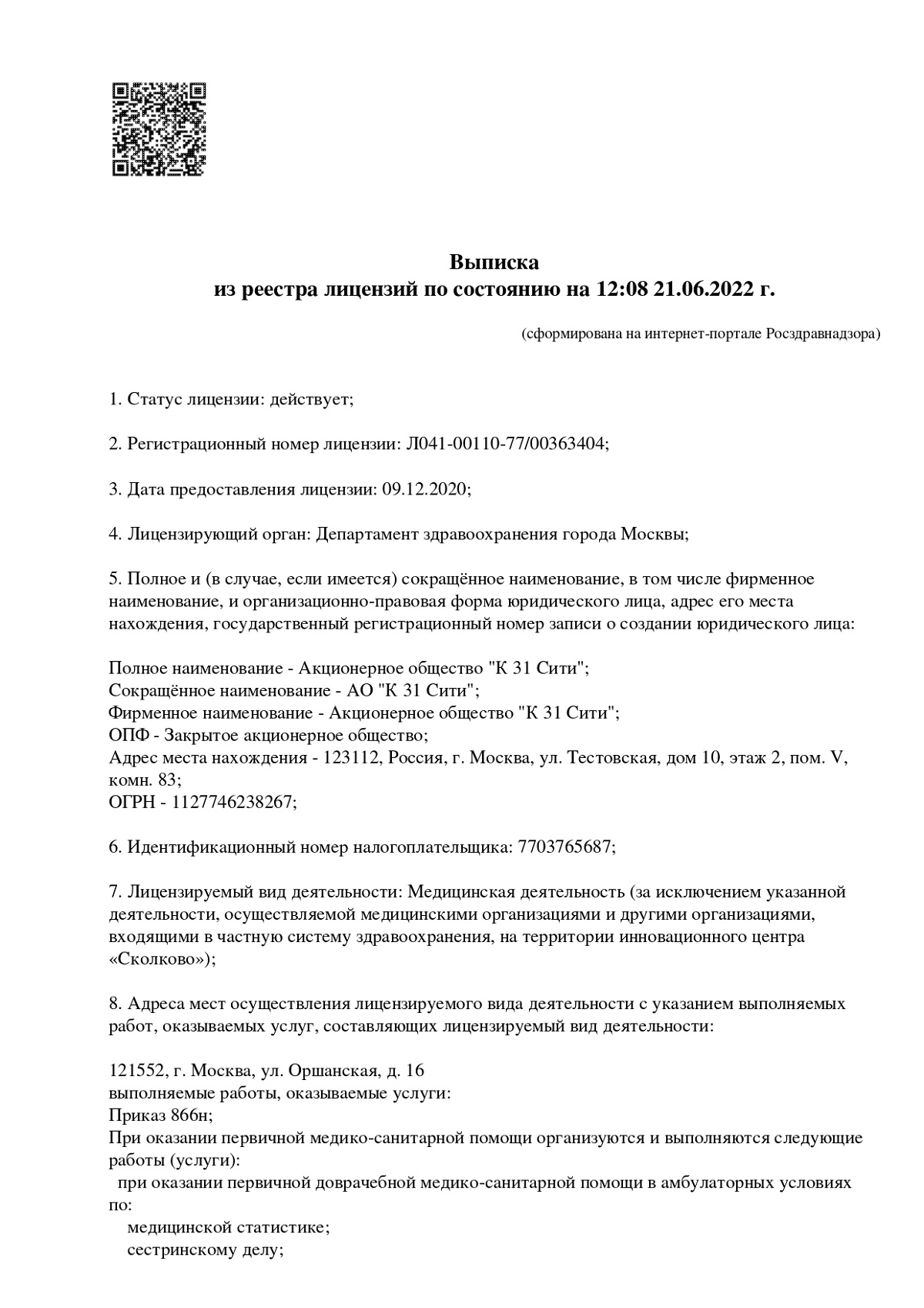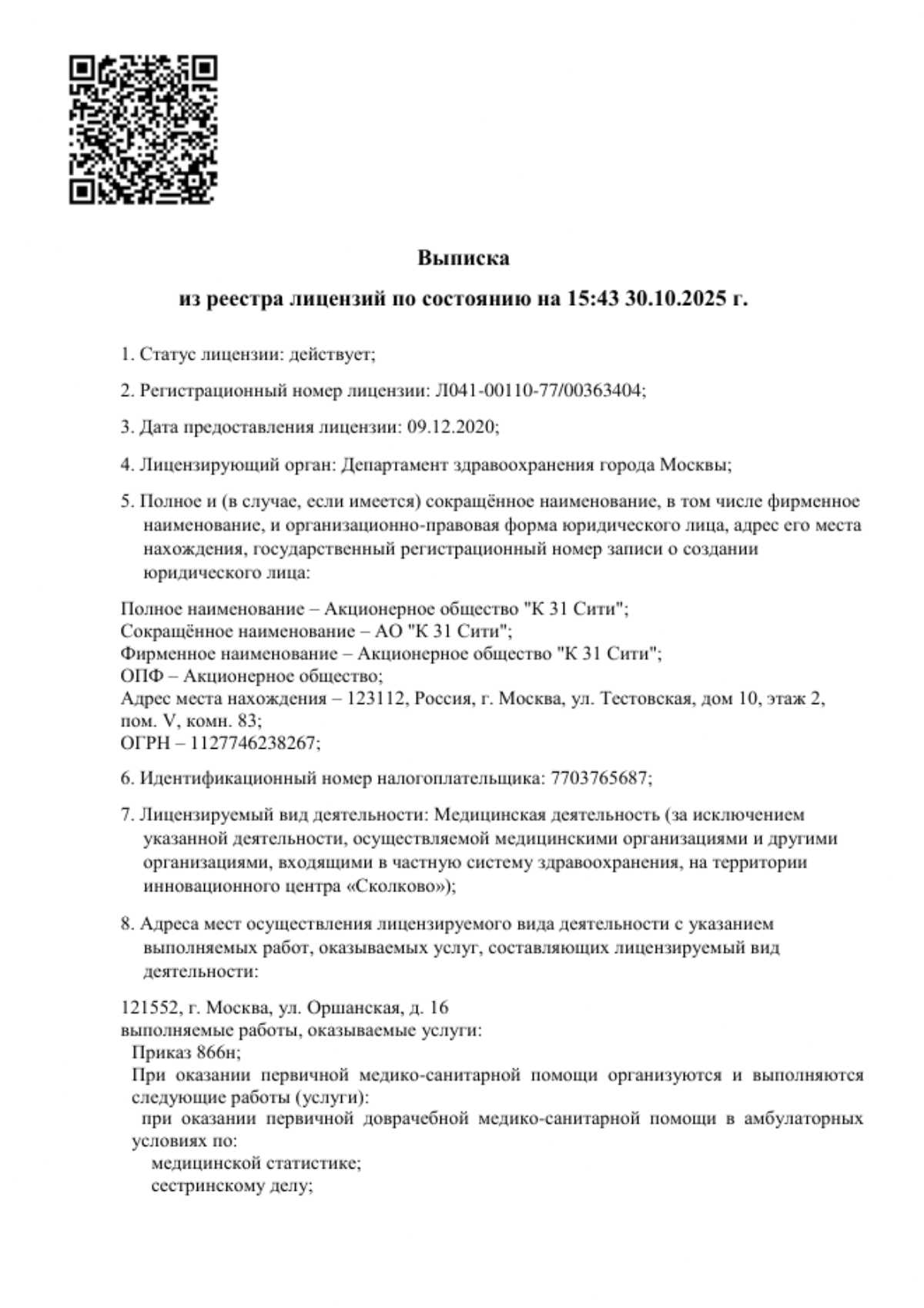Urology department
Services of the urological department of the clinic K+31
Our specialists, urologists of the highest qualification category with extensive work experience, are engaged in the diagnosis and treatment of the genitourinary system, both on a planned and emergency basis. We select organ-preserving, effective and least invasive methods of therapy to preserve your health and speed up recovery after surgery. Modern medical equipment in the urology department of our hospital allows us to perform high-tech operations of varying complexity: remote crushing of kidney and ureteral stones, fluoroscopy of the urinary tract, endoscopic, laparoscopic procedures and much more, including minimally invasive operations to remove benign prostatic hyperplasia. We work under the compulsory medical insurance and voluntary medical insurance policies. You can find out the full list of paid clinic services available under insurance from the managers.
An appointment with a urologist takes place in the consultation and diagnostic room of the urological center in Moscow, after which the doctor will refer you to the necessary examinations and tests to make an accurate diagnosis.
Contact information for the urology department K+31 is listed at the bottom of the page. You can make an appointment with a specialist on the website using a special form. We provide a full range of urological care.
Leading urologists of Russia in K+31
- The Urology Department is headed by Nikolai Ivanovich Sorokin, Professor of the Department of Urology and Andrology, Faculty of Fundamental Medicine, Lomonosov Moscow State University, Doctor of Medical Sciences, member of the Russian Society of Urologists, and member of the European and American Urological Associations.
- Our Urology Department employs two professors, five Doctors of Medical Sciences, and four Candidates of Medical Sciences.
- Many physicians in the K+31 Urology Department have completed internships at leading clinics in various European countries and are active members of the international scientific community. They collaborate with the Department of Urology, Faculty of Fundamental Medicine, Lomonosov Moscow State University, the Department of Urology, and A.I. Evdokimov Moscow State Medical University, among others, participating in clinical trials, and conducting research. The clinic's physicians are members of professional organizations: the Russian Society of Urologists, the American and European Urological Associations, and the International Society of Endourology.
- The K+31 Clinic utilizes international standards for genitourinary treatment, based on current European and American clinical guidelines. The urology department utilizes a full range of high-tech and minimally invasive surgeries, including robotic-assisted procedures using modern equipment, including the da Vinci robot.
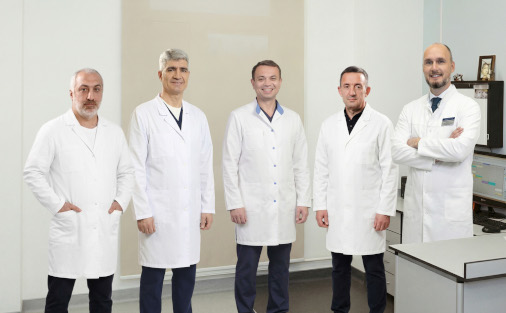
Services
Diagnosis of diseases of the urogenital area
Non-surgical treatment
Surgery in urology

This award is given to clinics with the highest ratings according to user ratings, a large number of requests from this site, and in the absence of critical violations.

This award is given to clinics with the highest ratings according to user ratings. It means that the place is known, loved, and definitely worth visiting.

The ProDoctors portal collected 500 thousand reviews, compiled a rating of doctors based on them and awarded the best. We are proud that our doctors are among those awarded.
Make an appointment at a convenient time on the nearest date
Four reasons to contact the urology department K+31 in Moscow
The latest equipment and treatment methods
- Our urology department is equipped with excellent equipment that meets the highest modern standards (laparoscopic equipment, surgical lasers, modern diagnostic equipment)
- Robot-assisted surgery using the DaVinci robot is available to our patients. The experience of our specialists in the urology department spans over 14 years and includes many hundreds of cured patients. We not only perform operations, but also provide follow-up follow-up care.
- Comfortable rooms with single and double occupancy
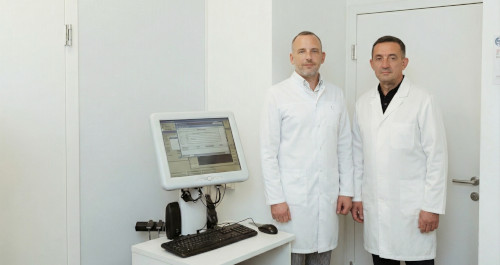
Oncourology is one of the key competencies of K+31
- We treat cancer patients. Our advantages are the examination and treatment of uro-oncological patients in the shortest possible time. It takes just a few days from contacting the clinic to starting treatment for oncourological diseases.
- We work closely with fellow oncologists, chemotherapists, and radiotherapy specialists. All these options provide the possibility of using multimodal therapy for complex uro-oncological diseases. Together with colleagues, we are looking for the best ways to solve the problem, we select a combination of different methods, we conduct a comprehensive analysis of the situation. This allows you to get a positive result from the treatment.

Expertise in maintaining male longevity and infertility treatment
- We keep up with modern medical trends. The list of our capabilities includes the implementation of systemic therapy under the Antiaging program, which ensures the return of energy and youth in matters of sexual health.
- Within the framework of the andrological program, the doctors of the urological department of the clinic have long and successfully engaged in in the treatment of male infertility. Hundreds of patients are grateful for our help in the realization of the most secret desire - the ability to bear children.

A unique experience in the treatment of urolithiasis
The urology department of the clinic has accumulated unique experience in the treatment of urolithiasis using endoscopic laser techniques and flexible instruments for removing kidney stones. Surgery without incisions, tissue dissection and pain. The day after the operation, most patients in the urology department leave the clinic without stones in the kidneys or ureters. We accept patients who present urgently with acute pain and come for routine examination and treatment. Modern methods of diagnosis and treatment, combined with the ability to interpret the symptoms of a particular disease, allow specialists at the urology center to detect the problem in a timely manner. To make an appointment with a urologist in Moscow, you just need to use the form provided on the website.
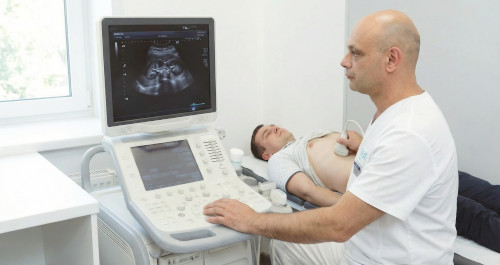

Choose a doctor
Surgical urology at K+31

The final decision on the presence of indications for surgery and its immediate implementation is the responsibility of the urologist-surgeon.
Surgical treatment in our urology department is possible for the following urological diseases:
- Uurolithiasis (stones of the bladder, kidneys, ureters). The following are used for treatment: shock wave lithotripsy of urinary stones, retrograde intrarenal surgery, percutaneous puncture nephrostomy, ureterolithotomy, percutaneous nephrolitholapaxy.
- Congenital or acquired narrowing (stricture) of the ureter, urethra. To eliminate the problem, urethroplasty, ureteroplasty, optical urethrotomy, laparoscopic ureterocystoneostomy are used
- Developmental anomalies that disrupt the functioning of the urinary system
- Benign prostatic hyperplasia (prostate adenoma) - treated using transurethral endoscopy, laparoscopy, puncture biopsy, embolization.
- Hydronephrosis caused by stricture of the ureteropelvic segment, kidney cyst, nephroptosis. Treated using laparoscopic methods
- Phimosis (short frenulum of the penis), hydrocele, spermatocele, testicular torsion, etc. Genital surgery is used to eliminate the pathology
- Neoplasms of the genitourinary system of any location. Depending on the disease, kidney resection, bladder resection, prostatectomy are used
- Renal cell carcinoma, complicated renal cysts, benign tumors and the consequences of traumatic organ damage are treated by laparoscopic nephrectomy as part of microsurgery
- Some other problems
In case of a violation in the structure of an organ or if correction of functions is necessary, uroandrological operations are performed in our urology department.
In the urology department of the K+31 clinic, sling operations are performed - these are interventions on the urinary system to eliminate urinary incontinence, based on strengthening the urethra.
For surgical intervention, the urology department of the clinic has all the necessary diagnostic and related equipment.

Operative treatment in our clinic can be carried out in different ways:
- 1. Laparoscopically. The urologist makes two or three incisions in the abdominal wall up to 3 cm long, through which the equipment is inserted. Manipulations are carried out thanks to flexible thin tubes - laparoscopes, equipped with surgical instruments and a video surveillance system. The method is less traumatic, recovery after surgery is faster, less time is spent on rehabilitation, and the volume of blood loss is significantly reduced.
- 2. With the help of a robot assistant. Modern high-tech equipment allows you to carry out most of the manipulations using a robot controlled by a urologist. Features: the movements of the equipment are always accurate, regulated by the given doctor parameters; minimal tissue trauma; lower risk of complications; the patient recovers faster and gets up on your feet. The robot can be used to remove tumors, including the prostate, correct congenital anomalies, remove kidney cysts, kidney cancer, reconstruct the ureteropelvic segment or pelvic ureter, nephrectomy, etc.
- 3. Open access. It is used relatively rarely when a wide view of the surgical field is required. The main indications are complex plastic surgery of the ureter, removal of the consequences of injuries, large neoplasms. After the intervention, rehabilitation is usually required, which patients can undergo in our clinic.
In our urology department, such medical operations and procedures are carried out as:
- Endourological interventions: contact ureterolithotripsy, ureterolithoextraction, percutaneous puncture nephrolitholapaxy, cystolithotripsy.
- Retrograde intrarenal surgery: laser enucleation of the prostate, transurethral resection (TUR) of the bladder neck, transurethral resection of the prostate.
- Laparoscopy: laparoscopic plastic surgery of the ureteropelvic segment, excision of a kidney cyst, removal of urachus cysts
- Andrology and reconstructive urology: testicular and penile frenuloplasty, foreskin excision, varicocelectomy.
Inpatient department of urology

Современная аппаратура и малоинвазивные методики позволяют врачам чаще использовать эпидуральную анестезию, которая значительно меньше влияет на работу сердца, почек и печени, чем общий наркоз, что особенно актуально для людей в возрасте.
Многие пациенты, особенно старшего возраста, имеют хронические заболевания других органов и систем, являющиеся противопоказаниями к общему наркозу. Эпидуральная анестезия снимает ограничения на хирургическое лечение у таких пациентов.
В послеоперационный период клиника К+31 размещает своих пациентов в комфортных условиях, в палатах, рассчитанных на одного или двух человек.
Пребывание в них включает:
- Постоянное наблюдение дежурного персонала
- Регулярные обходы лечащего врача
- Четырехразовое питание с учетом особенностей состояния
- Возможность нанять сиделку
- Проживание с родственником
Все палаты оснащены тревожной кнопкой, нажав которую можно моментально вызвать дежурного специалиста. Наши квалифицированные доктора, внимательный и заботливый персонал урологического отделения помогут вам выздороветь в максимально короткие сроки.
Price
Treatment of diseases
By no means a verdict! Prostate adenoma is a benign process, which is perfectly controlled and responds well to both medical and surgical treatment. The intrigue of prostate adenoma is only that the prevalence of this disease is approaching to 100 percent for older men. At 80, about 80-90% of men have this diagnosis, and almost everyone needs the help of a specialist.
No never. There are three very well-known diseases of the prostate gland: prostate cancer, prostate adenoma and prostatitis (inflammation of the prostate gland). All three diseases do not flow into each other into each other, but can simultaneously affect the same organ. However, no one has proven that they are somehow causally related.
Just the other day, we had just such a case: an elderly patient with an advanced oncological process came to us. At the medical consultation, my colleagues and I formulated the main task: "To try to extend the life of a person as much as possible." Therefore, speaking about the possibility of surgery, we must always evaluate the ratio of risk and effectiveness. If the benefit outweighs the risk, then we can recommend surgery, but the final decision must be made jointly with the patient. Our task as doctors in detail explain what the consequences of surgery may be. If the risk is too high, we can find alternative solutions and prescribe radiation, hormonal or chemotherapy. In each case, this decision is made individually based on the stage disease, general health and, of course, the wishes of the patient.
This is a myth that is hundreds of years old. There was a time when virtually all boys were circumcised in the United States, but the general profile incidence has not changed significantly. If circumcision really significantly reduced the risk of getting sick, in a number of countries many common STDs simply would not exist, or they would be much less common. Unfortunately, no such pattern has been found. From a medical point of view, as "STD prevention" this procedure does not make much sense. True, there is an addiction between cervical cancer risk and male circumcision. In this matter, circumcision is indeed a blessing.
Of course have. The most common mythical disease is chronic prostatitis. Diagnosis is very popular among outpatient urologists, however, only in 5% of cases it is really justified. In 95%, this diagnosis is not based on sufficient grounds. There are a number of objective signs, on the basis of which, after an appropriate examination, it is possible to diagnose chronic prostatitis. Unpleasant sensations in the perineum or above the womb and non-specific urination disorders are inconclusive proof of the presence of the disease!
